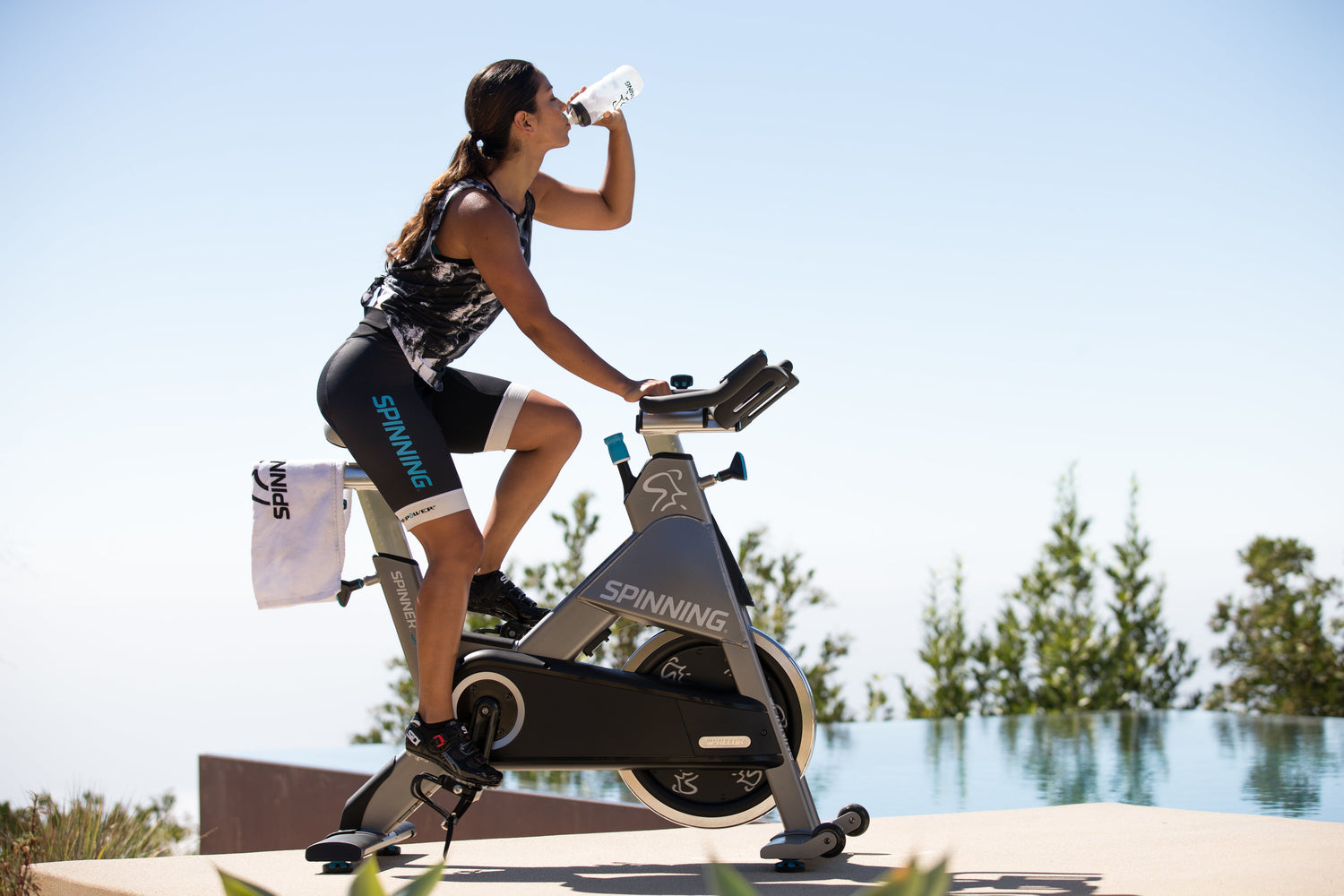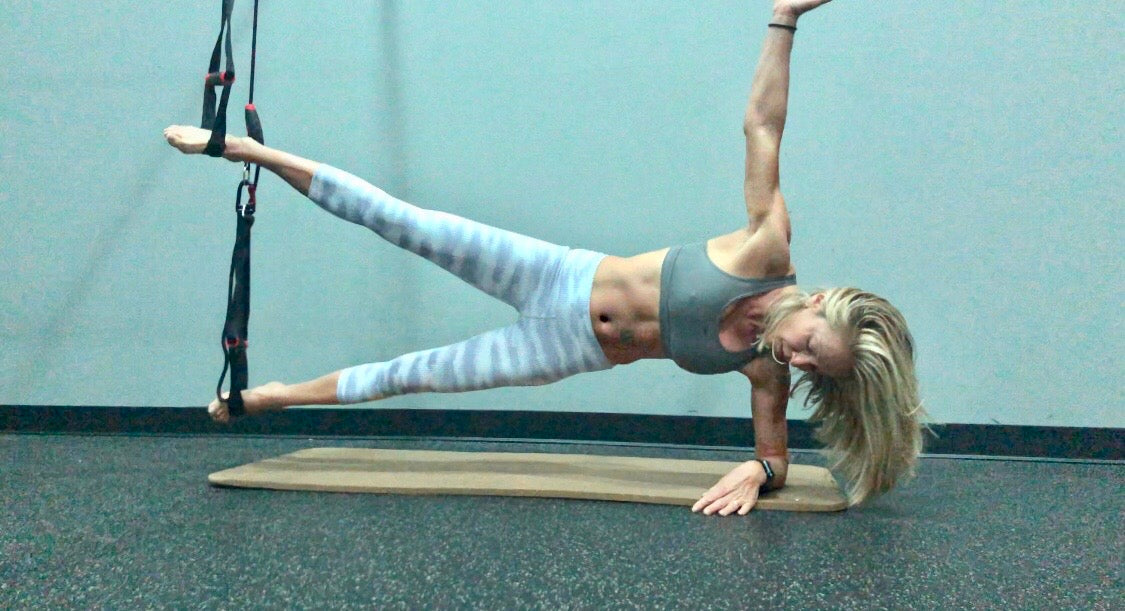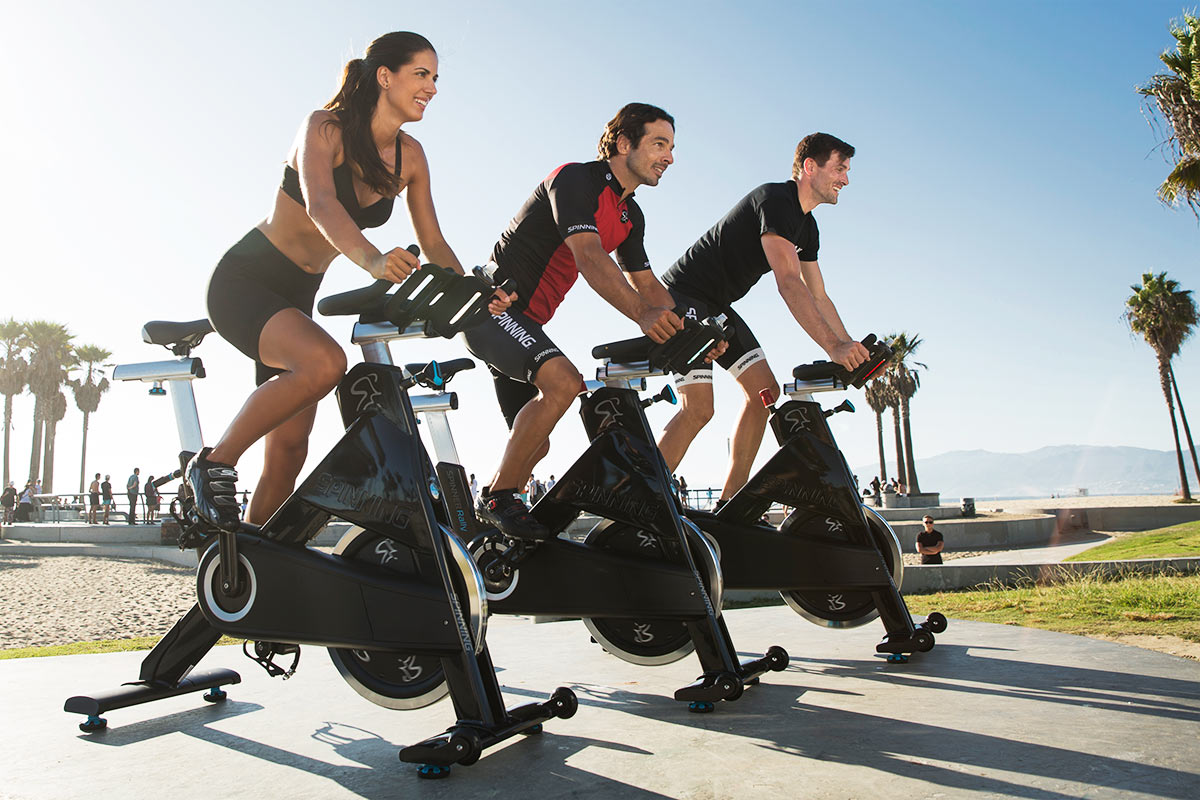One of the most important fuels you need for Spinning® class is water. Exercising indoors decreases your body's ability to cool itself down through convection (air flowing over the body), which means you sweat more—and that sweat stays on your skin, creating a sauna-like environment. To replenish the water that your body's losing, stabilize your core temperature, and help pump blood to those hard-working muscles you need to hydrate, hydrate, hydrate!
''Seventy-five percent of the energy your body produces is converted to heat rather than helping your muscles power through each pedal stroke," says Edmund Burke, Ph.D., coach of the 1980 and 1984 U.S. Olympic cycling teams. “Keeping your body cool and rehydrated while training indoors will enable you to train with greater efficiency and concentration.”
Not thirsty? You can't trust yourself when it comes to hydration. By the time you feel thirsty, your body is already feeling the effects of too little H20. Besides severely limiting your energy and performance, dehydration can also cause muscle cramps, nausea, dizziness and heat exhaustion. To avoid these problems, drink often and drink plenty.
The following guidelines will help ensure that you're getting enough:
- For a 40-minute indoor cycling session, drink at least 40 oz. of fluid: 8 oz. within 30 minutes before class, 24 oz. during class (the average water bottle holds 16-24 oz.) and 8 oz. within 30 minutes after class.
- Look for energy drinks that are 7 percent carbohydrate or less. They provide the same hydration benefits as plain water. Most sweetened fruit juices, sodas and commercial sports drinks have a higher sugar content, but this delays the gastric emptying process and make them ineffective hydration sources. Finally, avoid caffeine and alcohol before a workout; they're diuretics and can actually dehydrate you.
- Check your urine. It should be clear. Dark or cloudy urine can indicate you're dehydrated.
- Watch your weight. Weigh yourself before and after exercise; you should weigh the same number. Any weight lost during exercise is water (from sweat) and you should be replacing that continuously.
This article was originally published in the July 2005 edition of Spinning®Instructor News.





Leave a comment
This site is protected by hCaptcha and the hCaptcha Privacy Policy and Terms of Service apply.